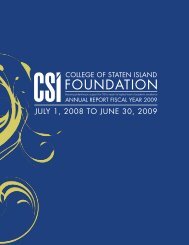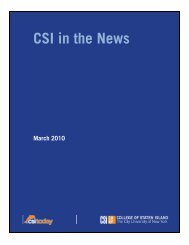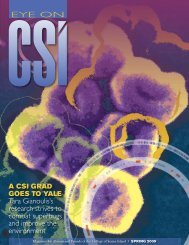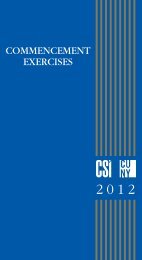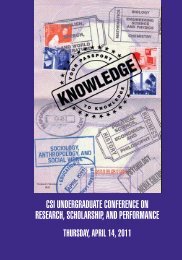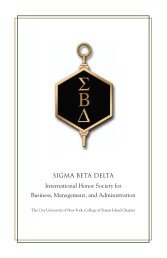Mislead<strong>in</strong>g consent forms told parents <strong>the</strong> test<strong>in</strong>g was for prevention of <strong>the</strong> disease. The research, not all ofwhich was conducted on patients, led to <strong>the</strong> development of hepatitis B vacc<strong>in</strong>es.An exhaustive review by The Associated Press of medical journal reports and decades-old press clipp<strong>in</strong>gsfound more than 40 such experiments like <strong>the</strong> one at Willowbrook. At best, <strong>the</strong>se were a search forlifesav<strong>in</strong>g treatments; at worst, some amounted to curiosity-satisfy<strong>in</strong>g experiments that hurt people butprovided no useful results.Inevitably, <strong>the</strong>y will be compared to <strong>the</strong> well-known Tuskegee syphilis study. In that episode, U.S. healthofficials tracked 600 black men <strong>in</strong> Alabama who already had syphilis but didn’t give <strong>the</strong>m adequatetreatment even after penicill<strong>in</strong> became available.These studies were worse <strong>in</strong> at least one respect — <strong>the</strong>y violated <strong>the</strong> concept of “first do no harm,” afundamental medical pr<strong>in</strong>ciple that stretches back centuries.“When you give somebody a disease — even by <strong>the</strong> standards of <strong>the</strong>ir time — you really cross <strong>the</strong> keyethical norm of <strong>the</strong> profession,” said Arthur Caplan, director of <strong>the</strong> University of Pennsylvania’s Center forBioethics.Some of <strong>the</strong>se studies, mostly from <strong>the</strong> 1940s to <strong>the</strong> ‘60s, apparently were never covered by news media.O<strong>the</strong>rs were reported at <strong>the</strong> time, but <strong>the</strong> focus was on <strong>the</strong> promise of endur<strong>in</strong>g new cures, while gloss<strong>in</strong>gover how test subjects were treated.Attitudes about medical research were different <strong>the</strong>n. Infectious diseases killed many more people yearsago, and doctors worked urgently to <strong>in</strong>vent and test cures. Many prom<strong>in</strong>ent researchers felt it was legitimateto experiment on people who did not have full rights <strong>in</strong> society — people like prisoners, mental patients,poor blacks. It was an attitude <strong>in</strong> some ways similar to that of Nazi doctors experiment<strong>in</strong>g on Jews.“There was def<strong>in</strong>itely a sense — that we don’t have today — that sacrifice for <strong>the</strong> nation was important,”said Laura Stark, a Wesleyan University assistant professor of science <strong>in</strong> society, who is writ<strong>in</strong>g a book aboutpast federal medical experiments.The AP review of past research found:* A federally funded study begun <strong>in</strong> 1942 <strong>in</strong>jected experimental flu vacc<strong>in</strong>e <strong>in</strong> male patients at a state <strong>in</strong>saneasylum <strong>in</strong> Ypsilanti, Mich., <strong>the</strong>n exposed <strong>the</strong>m to flu several months later. It was co-authored by Dr. JonasSalk, who a decade later would become famous as <strong>in</strong>ventor of <strong>the</strong> polio vacc<strong>in</strong>e.* Researchers <strong>in</strong> <strong>the</strong> mid-1940s studied <strong>the</strong> transmission of a deadly stomach bug by hav<strong>in</strong>g young menswallow unfiltered stool suspension. The study was conducted at <strong>the</strong> New York State Vocational Institution, areformatory prison <strong>in</strong> West Coxsackie. The po<strong>in</strong>t was to see how well <strong>the</strong> disease spread that way asPage 110 of 179
compared to spray<strong>in</strong>g <strong>the</strong> germs and hav<strong>in</strong>g test subjects brea<strong>the</strong> it. Swallow<strong>in</strong>g it was a more effective wayto spread <strong>the</strong> disease, <strong>the</strong> researchers concluded. The study doesn’t expla<strong>in</strong> if <strong>the</strong> men were rewarded forthis awful task.* For a study <strong>in</strong> 1957, when <strong>the</strong> Asian flu pandemic was spread<strong>in</strong>g, federal researchers sprayed <strong>the</strong> virus <strong>in</strong><strong>the</strong> noses of 23 <strong>in</strong>mates at Patuxent prison <strong>in</strong> Jessup, Md., to compare <strong>the</strong>ir reactions to those of 32 virusexposed<strong>in</strong>mates who had been given a new vacc<strong>in</strong>e.Prisoners have long been victimized for <strong>the</strong> sake of science. In 1915, <strong>the</strong> U.S. government’s Dr. JosephGoldberger — today remembered as a public health hero — recruited Mississippi <strong>in</strong>mates to go on specialrations to prove his <strong>the</strong>ory that <strong>the</strong> pa<strong>in</strong>ful illness pellagra was caused by a dietary deficiency. (The menwere offered pardons for <strong>the</strong>ir participation.)The late 1940s and 1950s saw huge growth <strong>in</strong> <strong>the</strong> U.S. pharmaceutical and health care <strong>in</strong>dustries,accompanied by a boom <strong>in</strong> prisoner experiments funded by both <strong>the</strong> government and corporations. By <strong>the</strong>1960s, at least half <strong>the</strong> states allowed prisoners to be used as medical gu<strong>in</strong>ea pigs.But two studies <strong>in</strong> <strong>the</strong> 1960s, <strong>in</strong>clud<strong>in</strong>g <strong>the</strong> hepatitis experiment at Willowbrook, proved to be turn<strong>in</strong>g po<strong>in</strong>ts<strong>in</strong> <strong>the</strong> public’s attitude toward <strong>the</strong> way test subjects were treated.The first came to light <strong>in</strong> 1963. Researchers <strong>in</strong>jected cancer cells <strong>in</strong>to 19 old and debilitated patients at aJewish Chronic Disease Hospital <strong>in</strong> Brooklyn to see if <strong>the</strong>ir bodies would reject <strong>the</strong>m.The Brooklyn experiment, comb<strong>in</strong>ed with <strong>the</strong> hepatitis test<strong>in</strong>g at Willowbrook and <strong>the</strong> Tuskegee experimentrevealed <strong>in</strong> 1972 proved to be a “holy tr<strong>in</strong>ity” that sparked extensive and critical media coverage and publicdisgust, said Susan Reverby, <strong>the</strong> Wellesley College historian who first discovered records of <strong>the</strong> syphilisstudy <strong>in</strong> Guatemala.Willowbrook, now home to <strong>the</strong> College of Staten Island, was closed for good <strong>in</strong> 1987 after <strong>the</strong> Advance andlater, a <strong>the</strong>n-unknown Geraldo Rivera, exposed conditions <strong>the</strong>re.Despite reforms put <strong>in</strong> place, two <strong>in</strong>ternational studies conducted <strong>in</strong> <strong>the</strong> last 15 years sparked outrage — andlast year a study conducted between 1946 and 1948 came to light <strong>in</strong> which American scientists <strong>in</strong>fectedprisoners and patients <strong>in</strong> a mental hospital <strong>in</strong> Guatemala with syphilis.It was apparently done to test whe<strong>the</strong>r penicill<strong>in</strong> could prevent some sexually transmitted disease. The studycame up with no useful <strong>in</strong>formation and was hidden for decades.“When <strong>the</strong> president was briefed on <strong>the</strong> details of <strong>the</strong> Guatemalan episode, one of his first questions waswhe<strong>the</strong>r this sort of th<strong>in</strong>g could still happen today,” said Rick Weiss, a spokesman for <strong>the</strong> White House Officeof Science and Technology Policy.Page 111 of 179
- Page 1 and 2:
CSI in the NewsMarch 2011College of
- Page 3 and 4:
ADSPage 3 of 179
- Page 5 and 6:
ArtsPage 5 of 179
- Page 7 and 8:
After 25 years working in the Broad
- Page 9 and 10:
This class will help kids develop a
- Page 11 and 12:
Student photography exhibit at CSI,
- Page 13 and 14:
"She inspired the whole show," Ms.
- Page 15 and 16:
ox Office, 2800 Victory Boulevard,
- Page 17 and 18:
In preparation for the district fes
- Page 19 and 20:
But the singer is just as witty as
- Page 21 and 22:
Faculty & StaffPage 21 of 179
- Page 23 and 24:
March 1, 2011Governments Consider C
- Page 25 and 26:
"In the end, it is much cheaper and
- Page 27 and 28:
Free RepublicBrowse · SearchPalest
- Page 29 and 30:
Page 29 of 179
- Page 31 and 32:
same borough street (Mountain View
- Page 33 and 34:
A revealing look at a different rel
- Page 35 and 36:
Discover what's hot at New Springvi
- Page 37 and 38:
facing tap-points early in the seas
- Page 39 and 40:
largest candy makers. The site repr
- Page 41 and 42:
March 21, 2011 Monday 15 AdarII 577
- Page 43 and 44:
conditions for the animals are actu
- Page 45 and 46:
Census figures show considerable dr
- Page 47 and 48:
Census puts Staten Island's populat
- Page 49 and 50:
Page 49 of 179
- Page 51 and 52:
Ten finalists, who'll earn hairstyl
- Page 53 and 54:
SportsPage 53 of 179
- Page 55 and 56:
The winner of the CSI vs. Rutgers-N
- Page 57 and 58:
Violets prepare for first-round sho
- Page 59 and 60: "Our goal at CSI is to build a prog
- Page 61 and 62: "I don't want to minimize the impor
- Page 63 and 64: CSI's season ends with 75-68 ECAC o
- Page 65 and 66: Hughes 4-9 0-0 9, Van Manen 5-7 0-0
- Page 67 and 68: Page 67 of 179
- Page 69 and 70: for. Even with the long-standing ri
- Page 71 and 72: CSI left the bases loaded in the se
- Page 73 and 74: Daramola, Zenia George, Tia Gardene
- Page 75 and 76: The Dolphins are counting on a deep
- Page 77 and 78: CSI bats go silent in 5-2 baseball
- Page 79 and 80: College of Staten Island softball t
- Page 81 and 82: Page 81 of 179
- Page 83 and 84: at Winter Haven, Fla.Messiah 000 01
- Page 85 and 86: Jessica Iuliano (W) and Kalyn Deso.
- Page 87 and 88: Baseball: CSI tops New Paltz to sna
- Page 89 and 90: Although the Dolphins suffered thro
- Page 91 and 92: Page 91 of 179
- Page 93 and 94: The Dolphins travel to New Jersey C
- Page 95 and 96: Romanov (back), Schevchenko (butter
- Page 97 and 98: Novikov was dead last after the fir
- Page 99 and 100: CSI swimming medley relay takes six
- Page 101 and 102: It was CSI’s second bronze of the
- Page 103 and 104: College of Staten Island baseball w
- Page 105 and 106: CSI blasts Lehman in softball sweep
- Page 107 and 108: StoriesPage 107 of 179
- Page 109: Victims of sinister medical procedu
- Page 113 and 114: Brooklyn girl flourishesat new scho
- Page 115 and 116: Staten Island Day Camp Is A Great P
- Page 117 and 118: Episcopal Church, Richmond.© 2011
- Page 119 and 120: spokesman for the city Department o
- Page 121 and 122: A rotating location.15. Forest Aven
- Page 123 and 124: “I’m a swimmer. I like to play
- Page 125 and 126: Hillel at College of Staten Island
- Page 127 and 128: Page 127 of 179
- Page 129 and 130: Barbara Bedell: Celebrating success
- Page 131 and 132: Professor: Staten Islanders are liv
- Page 133 and 134: Lifestyle changes help 2 Slim Down
- Page 135 and 136: Nearly two weeks later Ms. Negron h
- Page 137 and 138: companies can help.The Home Show Co
- Page 139 and 140: College Radio Stations Offer Many L
- Page 141 and 142: www.twloha.com for more information
- Page 143 and 144: In recent years, Pool Therapist Man
- Page 145 and 146: Arabia as a covert missionary. His
- Page 147 and 148: executive director of the Hebrew Fr
- Page 149 and 150: Numerous vendors will be raffling o
- Page 151 and 152: Page 151 of 179
- Page 153 and 154: MARIST TO HOST NATIONAL HISTORY HON
- Page 155 and 156: Development Corp.© 2011 SILive.com
- Page 157 and 158: "They usually build their nests in
- Page 159 and 160: For Staten Island author Tracy Brow
- Page 161 and 162:
From there, she grabbed stories fro
- Page 163 and 164:
Ms. Lugo is one of the success stor
- Page 165 and 166:
CSI students journey to the Far Eas
- Page 167 and 168:
Mar 18, 2011NYC's CUNY College ofSt
- Page 169 and 170:
students don’t have a lot of mone
- Page 171 and 172:
she said.Shana said that seeing her
- Page 173 and 174:
"We want (our players) to take part
- Page 175 and 176:
Vietnam and Iraq wars, among others
- Page 177 and 178:
St. George resident to receive Harr
- Page 179:
Islanders in Uniform -- March 13, 2



